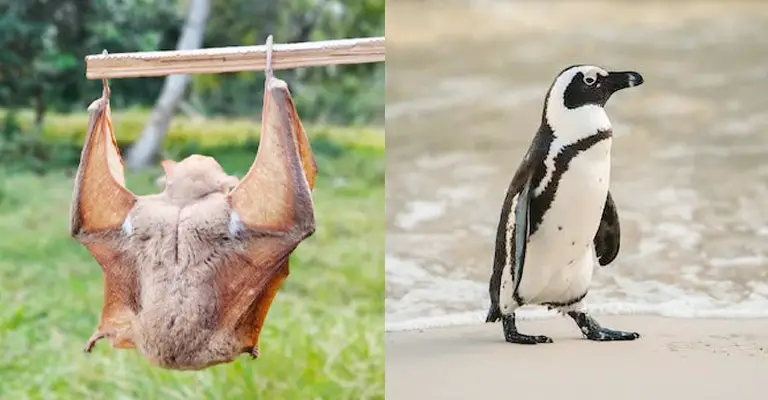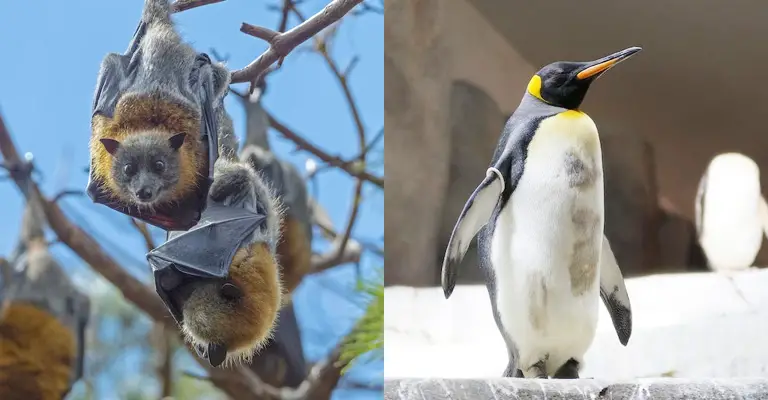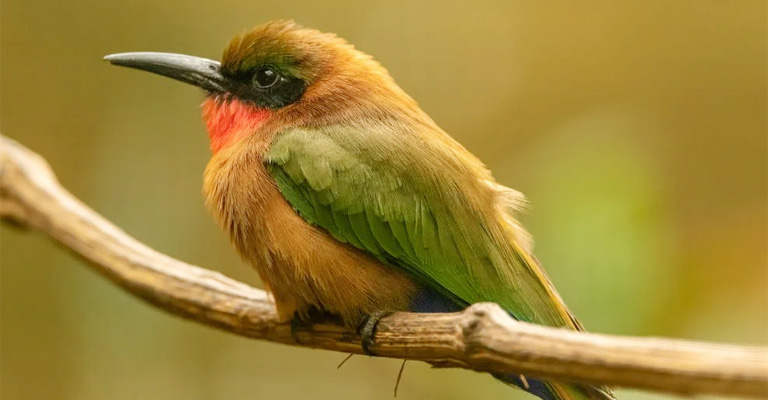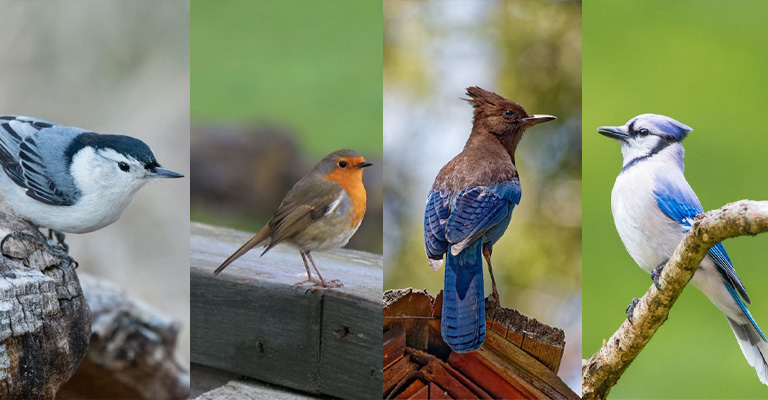Birds, with their magnificent plumage, diverse adaptations, and enchanting songs, have long captivated human fascination. However, there seems to be occasional confusion regarding the classification of birds. What are birds classified as mammals or reptiles?
In truth, birds constitute a distinct taxonomic class separate from both mammals and reptiles. Birds are a class of vertebrate animals known as Aves. They have features like feathers, beaks, air sacs, unique hollow bones, etc.
Want to learn more? Let’s delve into the scientific reasons behind birds’ classification and explore the unique characteristics that set them apart.

Birds: Features of A Unique Class
Scientifically classified as Aves, birds are a class of vertebrate animals characterized by several distinctive features. While they share certain traits with both mammals and reptiles, birds possess a set of unique adaptations that differentiate them from these two classes.
Feathers
One of the most striking features of birds is their feathers. These specialized structures serve multiple functions, including flight, insulation, and display. Feathers are not found in mammals or reptiles.
Beaks
Birds have beaks or bills, which are modified structures adapted for specific feeding habits and ecological niches. This distinguishing feature sets them apart from both mammals, which possess jaws with teeth, and reptiles, which typically have long, scaly snouts.
Warm-bloodedness
As birds are endothermic, they have the ability to regulate their body temperature internally. Unlike reptiles, which rely on the external environment for thermoregulation, birds maintain a constant and relatively high body temperature, similar to mammals.
Air Sacs and Efficient Respiration

For highly efficient respiration, birds possess air sacs. They have a unique system of lungs and air sacs that enables a continuous flow of oxygen during both inhalation and exhalation, contributing to their extraordinary respiratory capacity. This characteristic sets them apart from both reptiles and mammals.
Unique Skeletal Adaptations
Birds have several skeletal adaptations that enhance their flight capabilities, including a lightweight skeleton with hollow bones and a fused collarbone called the furcula or “wishbone.” These adaptations are not present in either mammals or reptiles.
Reproductive Traits
Just like reptiles, birds lay hard-shelled eggs. However, birds exhibit distinct reproductive behaviors, such as elaborate courtship rituals and parental care, which are not commonly observed in reptiles or mammals.
Mammals and Reptiles: Contrasting Classes

To better understand why birds are not classified as mammals or reptiles, it is essential to briefly examine the characteristics that define these two classes:
Mammals
- Possess mammary glands that produce milk for nourishing their young.
- Have hair or fur covering their bodies.
- Typically give live birth, although some lay eggs (monotremes).
- Possess specialized teeth for different feeding habits.
- Breathe through lungs and are primarily terrestrial or aquatic.
Reptiles
- Have scaly skin, which serves as protection and prevents desiccation.
- Breathe using lungs, though some reptiles have adaptations for underwater respiration.
- Lay eggs with soft or leathery shells, typically on land.
- Cold-blooded, relying on the environment for body temperature regulation.
- Varying dental structures, from no teeth to various types depending on diet.
Do Birds Share Any Characteristics with Mammals or Reptiles?

Yes, birds share certain characteristics with both mammals and reptiles. Here are a few examples:
Eggs
Birds, like reptiles, lay eggs. While mammalian reproduction is characterized by live birth, there are a few exceptions among mammals (such as monotremes like the platypus and echidna) that also lay eggs.
Vertebrates
Birds, mammals, and reptiles are all vertebrates, meaning they have a backbone or spinal column.
Homoeothermy
Birds and mammals are both warm-blooded and capable of maintaining a constant internal body temperature. Reptiles, on the other hand, are cold-blooded and rely on external heat sources to regulate their body temperature.
Vision
Birds and mammals have well-developed vision compared to most reptiles. Both birds and mammals possess more advanced visual systems, including color vision and complex retinas.
Similar Organs
Birds and mammals have similar organs, such as hearts, lungs, kidneys, and brains. However, the structures and functions of these organs may vary between the groups.
Why Is It Important to Understand the Classification of Birds?

Understanding the classification of birds is crucial for several reasons:
Biodiversity and Conservation
Knowing how birds fit into the broader classification of the animal kingdom helps us appreciate the incredible diversity of life on Earth.
It also aids in conservation efforts by providing a framework for understanding the relationships between different species and their ecological roles.
Scientific Research
Understanding bird classification allows scientists to study their evolution, behavior, physiology, and ecology more effectively. It helps in identifying patterns, making predictions, and conducting comparative studies across different groups of animals.
Education and Awareness
Accurate knowledge of bird classification helps in educating the public about the natural world. It enables us to communicate accurate information about birds and dispel any misconceptions or confusion regarding their classification.
Conservation and Wildlife Management
Proper classification of birds allows for effective management and conservation strategies. It aids in identifying endangered species, protecting habitats, and implementing appropriate conservation measures to ensure the survival of different bird species.
In summary, comprehending the classification of birds provides us with a foundation for appreciating their unique characteristics, contributes to scientific knowledge, supports conservation efforts, and enhances our understanding of the natural world.
FAQs
No, birds are not considered mammals. Birds belong to their own taxonomic class called Aves, which is distinct from mammals. While they share some characteristics with mammals, such as being warm-blooded and having a high metabolic rate, birds have unique adaptations like feathers, beaks, and specialized respiratory systems that differentiate them from mammals.
No, birds are not classified as reptiles either. Birds and reptiles are separate classes in the animal kingdom. Reptiles include animals like snakes, lizards, turtles, and crocodiles, while birds belong to the class Aves. Birds possess distinctive features like feathers, beaks, and endothermic metabolism, which distinguish them from reptiles.
The main characteristics that differentiate birds from mammals and reptiles are wings, feathers, beaks, and hollow bones.
Birds are scientifically classified as Aves, which is a class in the animal kingdom. The class Aves includes approximately 10,000 living species, ranging from tiny hummingbirds to large flightless birds like ostriches and emus.
Flightless birds belong to various groups. The most notable example is Ratites, a group of flightless birds that includes ostriches, emus, rheas, and kiwis. Then there are Penguins which are flightless birds adapted for swimming and diving in the Southern Hemisphere.
Also, some species of rails, like the flightless rails found on remote islands, have lost the ability to fly.
Final Words
So, now you know what are birds classified as mammals or reptiles. Birds occupy a unique position in the animal kingdom, distinct from both mammals and reptiles.
While they share some characteristics with these classes, birds possess numerous adaptations and specialized traits that set them apart. Feathers, beaks, warm-bloodedness, efficient respiration, and skeletal modifications are just a few examples of the unique features found in birds.
